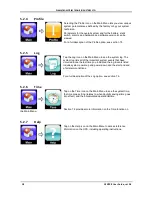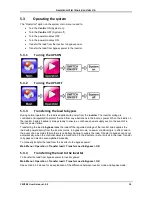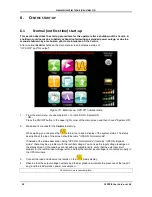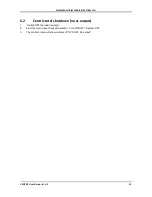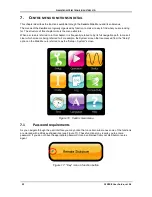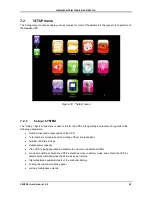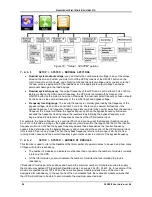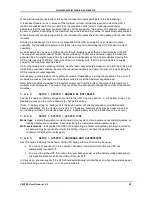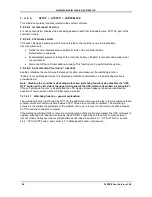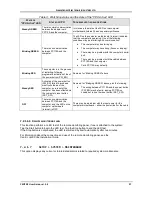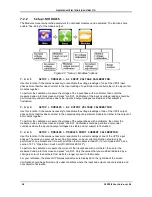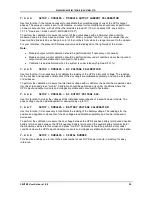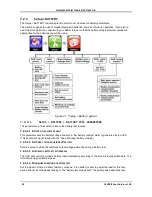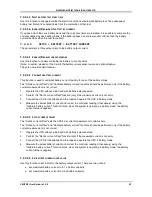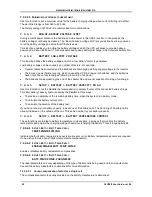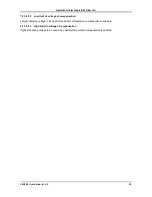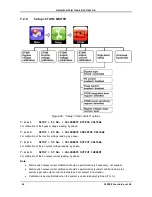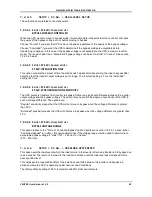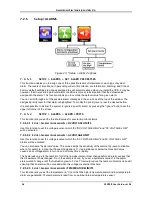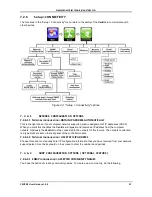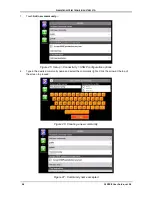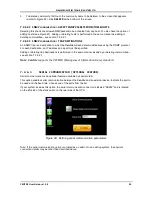
G
AMATRONIC
E
LECTRONIC
I
NDUSTRIES
L
TD
.
32
CENTRIC User Guide, rel. 3.4
7.2.3.2.5
M
INIMUM DC VOLTAGE AT CURRENT LIMIT
Use this function to set a minimum value for the battery-charging voltage when current limiting is in effect.
The permitted range is from 340 to 405 Vdc.
The factory setting of 340 Vdc is recommended for most situations.
7.2.3.3
END-OF-BACKUP VOLTAGE LIMIT
During a mains power blackout, the batteries provide power to the UPS’s inverter. In the process, the
battery voltage continually decreases. The “End-of-backup voltage limit” lets you define how low you want
to let the battery voltage go before the UPS shuts down.
This function enables you to define the battery voltage at which the UPS will cease to provide backup
power and will shut itself down. This helps avoid overly-deep battery discharge, which shortens battery life.
7.2.3.4
BATTERY LOW-LIMIT VOLTAGE
This function defines the battery voltage at which a “low battery” alarm is generated.
Low battery voltage can be caused by a number of factors. For example:
•
A power failure has occurred and the batteries are discharging as they supply voltage to the inverter.
•
There was a power failure recently, which caused the UPS to draw on its batteries, and the batteries
have not yet been fully recharged following the return of ac power.
•
The batteries are approaching the end of their useful life and are not capable of holding a full charge.
7.2.3.5
SETUP > BATTERY > BATTERY CAPACITY IN AH
Use this function to tell the
Centric
the total capacity (in ampere/hours) of the connected battery strings.
This total battery capacity figure is used by the
Centric
in three ways:
•
To provide an estimate of the remaining battery time, when the system is in battery mode.
•
To calculate the battery current limit.
•
To calculate the duration of the battery test.
If you do not know your battery capacity, look at one of the battery cells. The Ah rating of a battery cell is
usually indicated on the outside of the cell. This same number is your battery capacity.
7.2.3.6
SETUP > BATTERY > BATTERY TEMPERATURE CONTROL
These functions are related to battery temperature compensation, a process that monitors the battery
temperature and adjusts the charging voltage to avoid overcharging the battery. This prolongs battery life.
7.2.3.6.1
S
ETUP
>
B
ATT
.
>
B
ATT
.
T
EMP
.
C
NTL
.
>
TEMP
SENSORS
YES/NO
Indicate whether battery temperature sensors are present or not. Battery temperature sensors are required
if one wishes to make use of battery temperature compensation.
7.2.3.6.2
S
ETUP
>
B
ATT
.
>
B
ATT
.
T
EMP
.
C
NTL
.
>
ENABLE/DISABLE
BATT.
TEMP.
COMP.
Enables / disables battery temperature compensation.
7.2.3.6.3
S
ETUP
>
B
ATT
.
>
B
ATT
.
T
EMP
.
C
NTL
.
>
BATT.
TEMP.
COMP.
PARAMTERS
The ideal parameters can vary depending on the type of battery cells being used and their manufacturer.
Consult the battery manufacturer's data sheet for more information.
7.2.3.6.3.1 Temp. compensation factor for a single cell
The compensation factor is usually provided on the battery manufacturer's data sheet.

